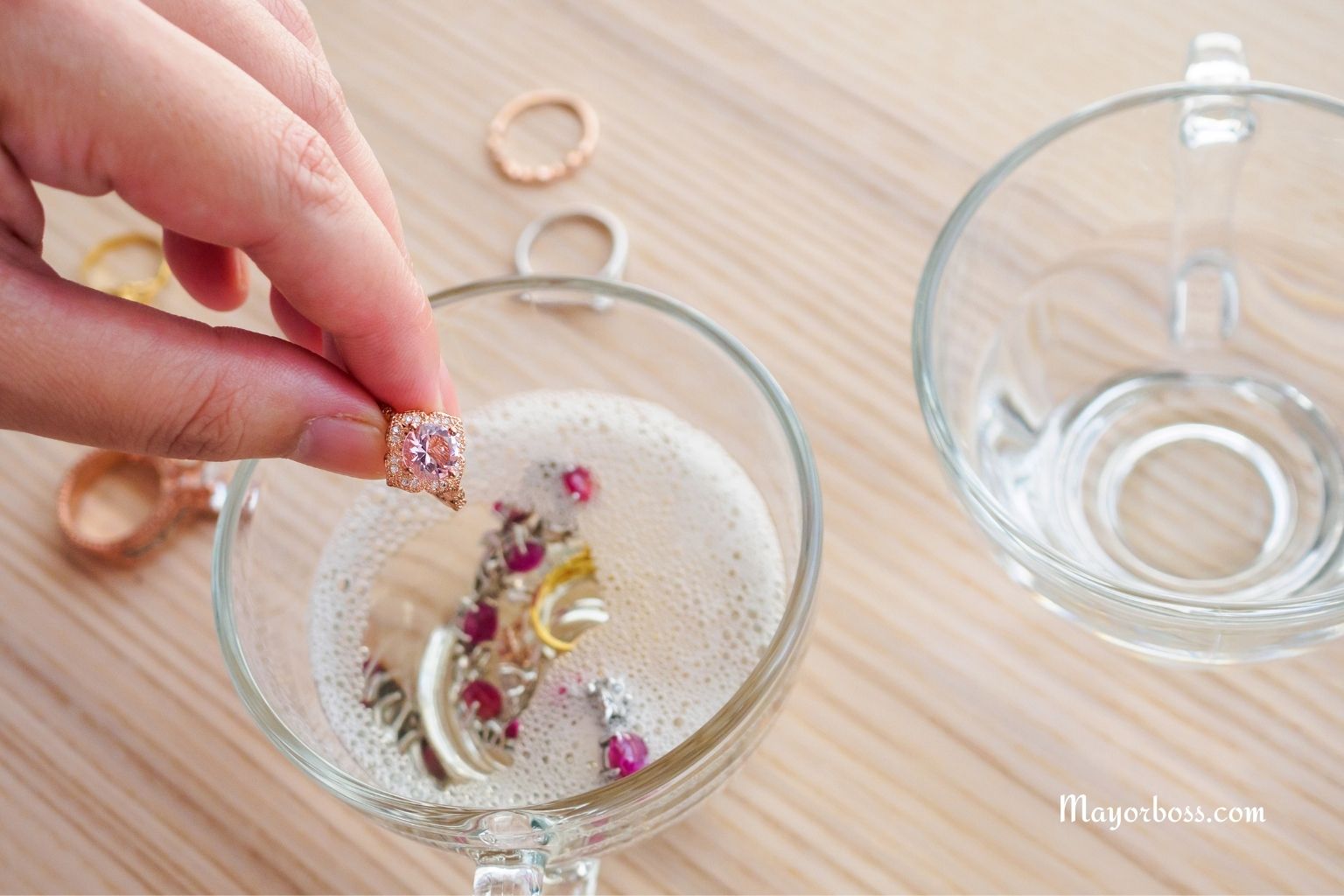How Often Should You Clean Your Everyday Jewelry?
The rings you wear every day need a gentle clean once a week. Earrings once a week. Necklaces and chains every one to two weeks. Bracelets and watches weekly. Do a deeper clean once a month and schedule a professional check once or twice a year.

Every day, pieces touch skin, sweat, lotion, hair products, and soap. Over time, a thin film forms. That film dulls shine and can trap germs. For some people, this leads to itchy skin, ear irritation, or breakouts under rings.
There is also a safety angle. Grit can wedge under prongs and loosen stones. Residue can hide small cracks. Regular care keeps your jewelry bright and also helps you spot problems early.
How Often To Clean Jewelry At Home

Rings
Rings see the most wear. They touch sinks, handles, gym equipment, and food prep. Clean once a week. If you cook a lot, garden, or work with lotions, clean twice a week.
Remove rings for hand cream, workouts, and cleaning tasks. Chlorine and strong cleaners weaken metal over time. If removal is not practical, rinse with warm water and dish soap after the task, then pat dry with a soft cloth.
Earrings
Earrings sit against warm skin and hair, which means oil and skin cells gather fast. Clean posts and backs once a week. If your piercings are new or prone to irritation, wipe posts after each wear with alcohol on a cotton swab, then let them air dry.
Sleep without earrings when possible. This reduces tugging and allows skin to breathe.
Necklaces and chains
Necklaces collect perfume and sweat along the neckline. Clean every one to two weeks. Pay attention to clasp areas, where buildup hides. For delicate chains, use a soft brush and light pressure to avoid snags.
Bracelets and watches
Wrists collect lint and soap residue during handwashing. Clean bracelets and metal watch bands once a week. Leather straps need a different approach. Wipe with a barely damp cloth, then dry soon after. Avoid soaking leather.
Silver pieces
Sterling silver tarnishes from contact with air and moisture. For pieces you wear often, quick polishing once a week keeps them bright. Do a deeper clean once a month. Store silver in an airtight pouch when not in use to slow tarnish.
Gemstones
Hard stones such as diamond, sapphire, and ruby handle weekly cleaning well. Softer or porous stones need more care. Pearls, opals, turquoise, malachite, and amber should not soak. Wipe with a soft damp cloth after each wear, then let them dry on a towel. Keep pearls away from perfume and hairspray.
If you are unsure about a stone, choose the gentlest method and skip heat and long soaks.
Plated jewelry
Gold-plated and silver-plated items have a thin surface layer. Use a soft cloth and mild soapy water no more than once every one to two weeks. Avoid scrubbing. Harsh brushes wear through the finish. Remove these pieces before workouts, swimming, or cleaning.
A simple home routine that protects shine
You do not need fancy gear. A small bowl, warm water, a drop of mild dish soap, a soft toothbrush, and a lint-free cloth will handle most jobs.
- Fill a small bowl with warm water and a little dish soap.
- Place the jewelry in the solution for five to ten minutes. Skip soaking for pearls, opals, turquoise, malachite, or leather.
- Gently brush every surface, including under the stone and around prongs. Use light strokes.
- Rinse with clean warm water. A mesh strainer helps prevent lost pieces.
- Pat dry with a soft cloth. Let items air dry fully before storage.
When to try other methods
A silver polishing cloth removes tarnish fast and leaves a protective layer. Keep one in your drawer for quick touch-ups.
An ultrasonic cleaner shakes loose dirt using sound waves. It works well for solid metal and many hard stones. Do not use it for pearls, opals, emeralds with fillings, antique pieces, or anything with loose settings. When in doubt, skip it.
Steam cleaners lift grime in seconds. Heat and pressure can stress some stones and adhesives. Reserve this tool for solid metal and secure settings.
Signs your jewelry needs attention now
Look for a dull film that does not wipe off, dark lines along prongs, green marks on skin, rough spots that catch on clothing, or a faint rattle when you tap a ring near your ear. Any of these signals a cleaning or an urgent visit to a jeweler.
If skin under a ring looks red or itchy, remove the ring and clean both the ring and skin. Switch to a fragrance-free hand cream and keep that area dry. If irritation continues, choose hypoallergenic metals such as platinum, titanium, or surgical-grade stainless steel.
Professional care timeline
Book a professional cleaning and inspection once or twice a year. A jeweler will check prongs, tighten screws, and test clasps. This prevents lost stones and broken chains. Take heirlooms and fine pieces in for checks before travel or special events.
Hygiene and storage tips that keep pieces clean longer
Put on jewelry after skincare, sunscreen, perfume, and makeup. These products leave films that attract dust. Remove jewelry for workouts, swimming, and household cleaning. Rinse pieces that touch saltwater or chlorine with warm fresh water, then dry well.
Store items in separate soft pouches or lined compartments. This prevents scratches and slows tarnish. Keep silica gel packets in your jewelry box to reduce moisture.
What to avoid
Avoid bleach, acetone, toothpaste, baking soda pastes, and harsh powders. These scratch metal and damage stones. Skip paper towels for drying, as wood fibers can mark soft metals. Avoid extreme heat and sudden temperature changes, which can crack some stones.
The bottom line
A steady routine protects both your skin and your sparkle. Clean weekly for most pieces, wipe delicate stones after each wear, and plan a monthly deeper clean. Add a professional check once or twice a year. With this simple plan, your everyday jewelry stays bright, safe, and ready for anything.
FAQs
How often should I clean a diamond engagement ring I wear every day?
Once a week at home with warm water, mild dish soap, and a soft brush. Do a deeper clean once a month and schedule a jeweler check once or twice a year.
Can I use vinegar or baking soda on gold or gemstones?
No. Acids and gritty pastes can etch metal and scratch stones. Use mild soapy water and a soft brush instead.
What is the safest way to clean pearls at home?
Wipe pearls with a soft, damp cloth after each wear, then lay flat on a towel to dry. Keep them away from perfume, hairspray, and long soaks.
Is an ultrasonic cleaner safe for all jewelry?
No. It suits solid metal and many hard stones, such as diamond and sapphire. Do not use it for pearls, opals, turquoise, emeralds with fillings, glued settings, or antique pieces.
When should I see a jeweler?
If a stone looks loose, a prong looks bent, a clasp sticks, or you notice irritation under a piece. Also, plan routine cleanings and inspections once or twice a year.






